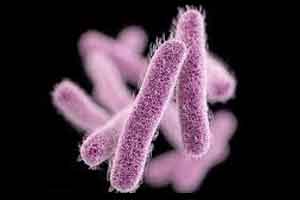- Home
- Editorial
- News
- Practice Guidelines
- Anesthesiology Guidelines
- Cancer Guidelines
- Cardiac Sciences Guidelines
- Critical Care Guidelines
- Dentistry Guidelines
- Dermatology Guidelines
- Diabetes and Endo Guidelines
- Diagnostics Guidelines
- ENT Guidelines
- Featured Practice Guidelines
- Gastroenterology Guidelines
- Geriatrics Guidelines
- Medicine Guidelines
- Nephrology Guidelines
- Neurosciences Guidelines
- Obs and Gynae Guidelines
- Ophthalmology Guidelines
- Orthopaedics Guidelines
- Paediatrics Guidelines
- Psychiatry Guidelines
- Pulmonology Guidelines
- Radiology Guidelines
- Surgery Guidelines
- Urology Guidelines
IIT Guwahati researchers develop low cost portable device to rapidly detect bacteria

A team of researchers from the Indian Institute of Technology Guwahati (IITG) has developed a low cost and handheld device, which can detect bacteria quickly. The new, low-cost, bio-compatible sensor can detect bacteria almost instantaneously without the need for cell culture and microbiological assays. At present, the detection of bacteria in body fluids is done in a laboratory which is a time consuming process. The research has been published in the Journal of Materials Chemistry A.
The device will enable rapid detection of bacteria, which is important not only in healthcare but also in anti-bioterrorism measures and environmental monitoring applications. A bacterial infection is a common cause of morbidity and mortality worldwide and despite the development of a range of antibiotics, the challenge continues to lie in detecting and diagnosing bacterial infection early on, as present detection techniques tend to be time-consuming.
"Current diagnostic processes are frustratingly time-consuming, especially when time is of the essence in administering treatment," said Professor Parameswar K Iyer from IIT Guwahati.
"While newly developed techniques such as real-time qPCR can detect bacteria faster than conventional assay-based methods, they are restricted by the need for expensive apparatuses and trained personnel," Iyer said.
"What would be useful are hand-held rapid detection kits like those used for blood sugar monitoring and pregnancy detection," he said.
The Organic Field Effect Transistor (OFET)-based bacterial diagnostic device has been shown to have the ability to detect bacteria and distinguish between Gram-positive and Gram-negative types, said researchers from the Indian Institute of Technology (IIT) Guwahati.
At present, the detection of bacteria in body fluids is done in laboratories.
The cells that are derived from the patient are initially cultured or grown so that enough of the bacterial cells are available for microbiological analysis.
The research brings portable bacterial detection kits closer to reality. The sensor detects the charges on the cell walls of bacteria.
"It is known that Gram-positive bacteria such as S pneumonia, have different cell wall compositions than Gram-negative bacteria such as the common E coli," said Professor Siddhartha S Ghosh from IIT Guwahati.
"Such asymmetric cell wall organizations could alter the flow of electrons at the channel of OFETs during their detection," Ghosh said.
The important breakthrough by the team was in developing and using an OFET to detect this surface charge.
The OFET is an electronic device that works on the principle that charges in the vicinity of the channels of certain semiconductors can induce a current in them.
The charges on the surface of the bacterium induces a current in the OFET, which is registered and read.
The OFET device developed by the team consists of a unique and hybrid tri-layer dielectric system built on simple glass and flexible PET (a kind of plastic) substrates and can operate at ultra-low operating voltages.
The team has shown that this OFET sensor can not only detect bacteria but also differentiate between Gram-positive and Gram-negative bacteria.
"Not only have we shown the sensing capabilities of this portable OFET device, but we have also shown the mechanism by which sensing occurs and elucidated the role of the bacterial wall in distinguishing various bacterial types," Iyer added.

Disclaimer: This site is primarily intended for healthcare professionals. Any content/information on this website does not replace the advice of medical and/or health professionals and should not be construed as medical/diagnostic advice/endorsement or prescription. Use of this site is subject to our terms of use, privacy policy, advertisement policy. © 2020 Minerva Medical Treatment Pvt Ltd